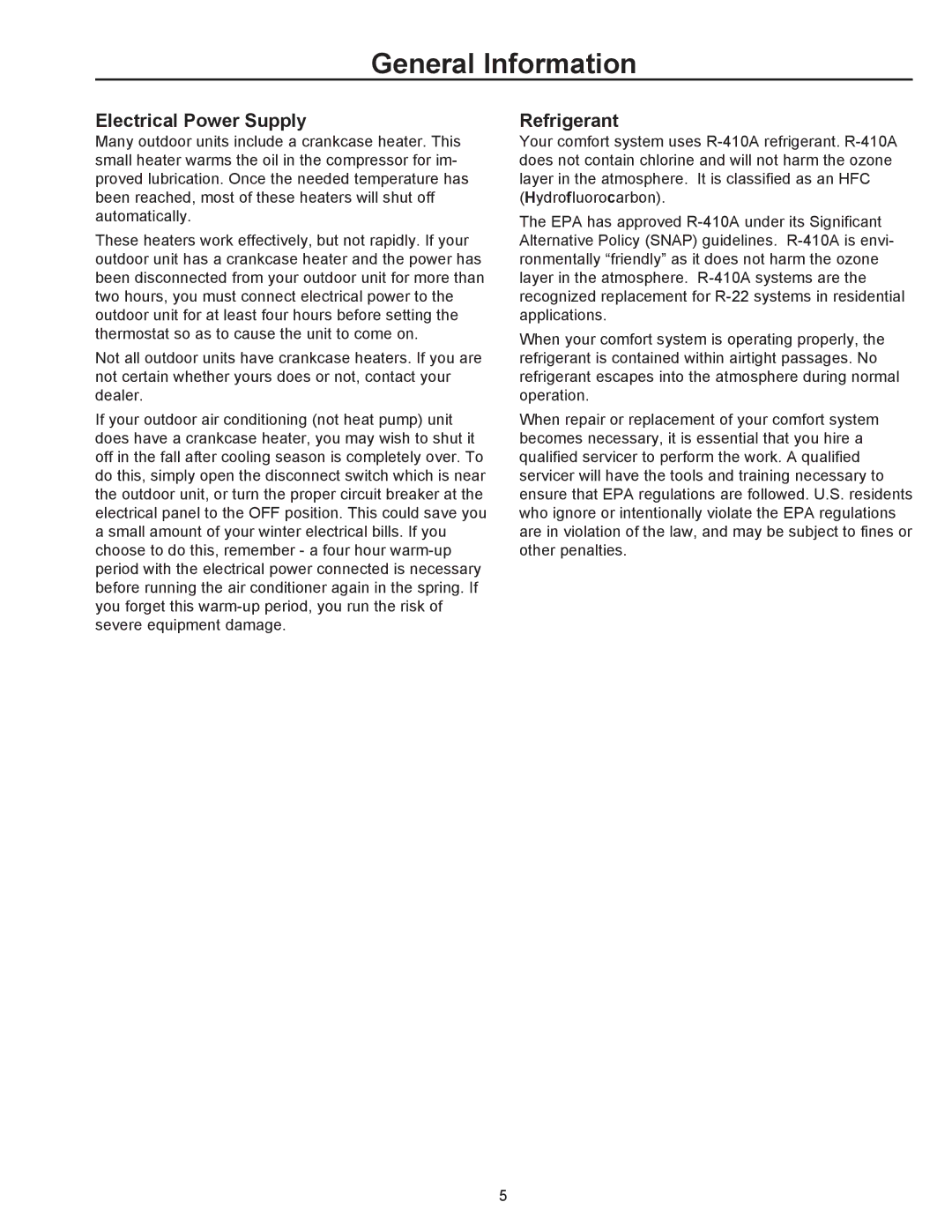R-410A specifications
Amana R-410A is a high-efficiency refrigerant widely utilized in modern air conditioning and heat pump systems. As a hydrofluorocarbon (HFC), R-410A replaces the older R-22 refrigerant which was phased out due to environmental concerns regarding ozone depletion. One of the main features of R-410A is its ability to provide greater energy efficiency, making it a popular choice for both residential and commercial HVAC systems.One of the significant characteristics of R-410A is its higher pressure compared to R-22. This characteristic not only enhances the cooling performance of air conditioning units but also necessitates specific design considerations for equipment that utilizes this refrigerant. Manufacturers must ensure that their systems are built with components capable of handling the increased pressures associated with R-410A.
R-410A operates best at a higher temperature glide, which means it can maintain a more consistent temperature across its cooling cycle compared to some other refrigerants. This property allows for improved climate control within a space, as it reduces the likelihood of temperature fluctuations and enhances comfort. The refrigerant's molecular composition contributes to improved heat transfer efficiency, which leads to reduced energy consumption and lower operating costs.
Additionally, R-410A has no ozone-depleting potential (ODP), making it a more environmentally friendly option in the refrigerants market. Its global warming potential (GWP), while still a concern, is significantly lower than that of many older refrigerants. As regulation becomes stricter regarding climate change impact, the adoption of R-410A is likely to continue, particularly as buildings upgrade their systems.
Amana has integrated advanced technologies into systems operating on R-410A, such as variable speed compressors and smart thermostats, which adjust operation based on real-time conditions to maximize efficiency. These innovations allow for more precise control over indoor environments, further enhancing energy savings.
In summary, Amana R-410A offers key advantages such as increased efficiency, environmentally friendly properties, and enhanced temperature control. As technology continues to evolve, the ongoing exploration of refrigerant options will keep R-410A at the forefront of HVAC solutions for years to come. Its balance of performance and environmental considerations makes it a primary choice in the quest for sustainable heating and cooling systems.
